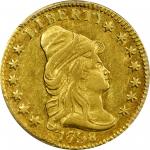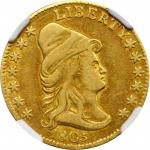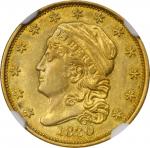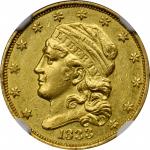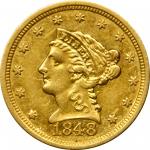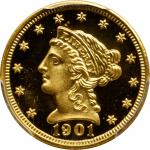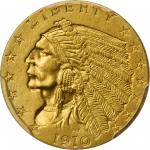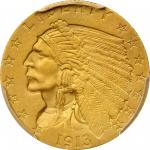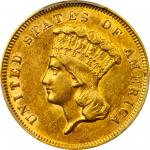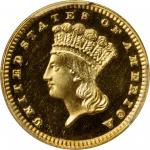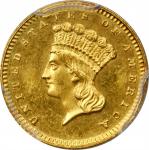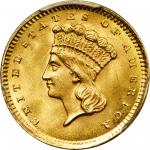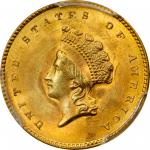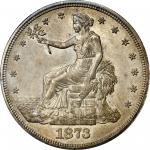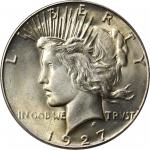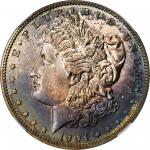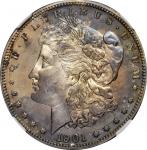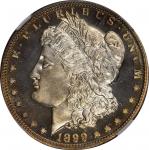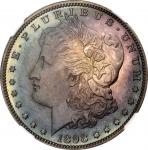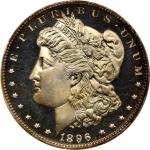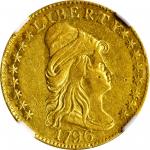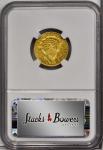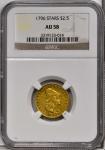1796 Capped Bust Right Quarter Eagle. Stars on Obverse. BD-3. Rarity-5+. AU-58 (NGC).Pretty bright to medium gold patina is seen on both sides of this rare and significant early quarter eagle. Both sides are well centered on the planchet, the borders fully denticulated around devices that exhibit plenty of bold to sharp detail. A touch of softness along the right obverse border and at the central high point on that side is noted; the eagles breast and neck are blunt due to a concentration of light adjustments marks (as made) in that area that interfered with metal flow during striking. Traces of the original satin to modestly semi-prooflike finish are noted, especially in the protected areas around the peripheral devices. The eye appeal is strong. BD Die State c.<p>The Coinage Act of April 2, 1792, authorized the production of three gold denominations at the newly established Mint: the $10 eagle, $5 half eagle, and finally the $2.50 quarter eagle. It would not be until four years later that the first quarter eagles rolled off the presses. This was no grand undertaking in terms of quantities: while 6,196 half eagles and 4,146 eagles were coined in 1796, scarcely 1,395 combined of both varieties of 1796 quarter eagles were delivered. The half eagle turned out to be the most popular of the three denominations for general commerce, while the eagle was useful for large overseas transactions with Europe. The quarter eagle, however, did not prove especially useful in everyday commerce. In the Mints early days, precious metal coins were mostly made to order by depositors who requested specific denominations, and the quarter eagles bigger siblings received most of the attention. The denomination was struck only erratically and generally in small numbers in its first dozen years before production was put on hold in 1808.<p>The first 1796 quarter eagles minted featured an obverse without stars, an unusual choice considering the half eagle and the eagle all had stars as part of their obverse designs. Likely, they were omitted as there were stars on the reverse, although over the years quite a few federal coins have had stars on both sides. The first $5 and $10 coins of 1795, continuing through 1797, had stars only on the obverse. At some point in early 1797, a decision was made to add 16 stars (in an 8x8 configuration) to represent each state of the Union at the time and mark the admission of Tennessee in June of that year. This was the first and as it turns out the last time the obverse star count on quarter eagles was adjusted each time a state was added. <p>For the entire 1796 issue, three die pairs using two obverses and three reverses were employed. Both obverse dies shared the same master hub and date punches. The three reverse dies all bear 16 stars and were made using the same master hub for the eagle, clouds and the ribbon inscribed E PLURIBUS UNUM. The reverse hubs are believed to be by John Smith Gardner, and feature an eagle with a longer neck, visible tongue, two rows of tail feathers, and three claws visible on top of the talons clutching the arrows and branch. The later Scot hubs produced after Gardner left in 1796 have a shorter neck on the eagle, three rows of tail feathers, and a single claw on top of each talon. Only one set of dies -- the BD-3 die marriage -- was required to produce the entire run of 432 Stars on Obverse quarter eagles. Conventional wisdom indicates that they were all coined on January 14, 1797. Some research suggests that this batch may have also included some No Stars quarter eagles as part of the 432, then an additional 98 examples of the BD-3 delivered on February 28, 1797.<p>As with most early gold, a large quantity of 1796 quarter eagles ended up in the bullion speculators crucibles in the 1820s and 1830s, leaving only handfuls for modern numismatists. The 1796 Stars on Obverse quarter eagle is much rarer than the earlier No Stars variety as a whole; perhaps only a third as many BD-3 pieces as BD-2 No Stars coins are extant (the BD-1 pairing is of exceptional rarity). At most, 40 to 50 of the Stars on Obverse variety are thought to survive, with maybe little more than half a dozen at the Mint State level. Despite this, the popularity of the No Stars obverse has helped it capture much of the spotlight from the BD-3. However, the Stars on Obverse quarter eagle is attracting greater attention as more and more collectors and scholars come to appreciate its rarity. The offered example is very close to Mint State and an outstanding representative of this important and rare issue. Expect spirited bidding to secure this specimen and plan your strategy accordingly.<p><p><p><p>

